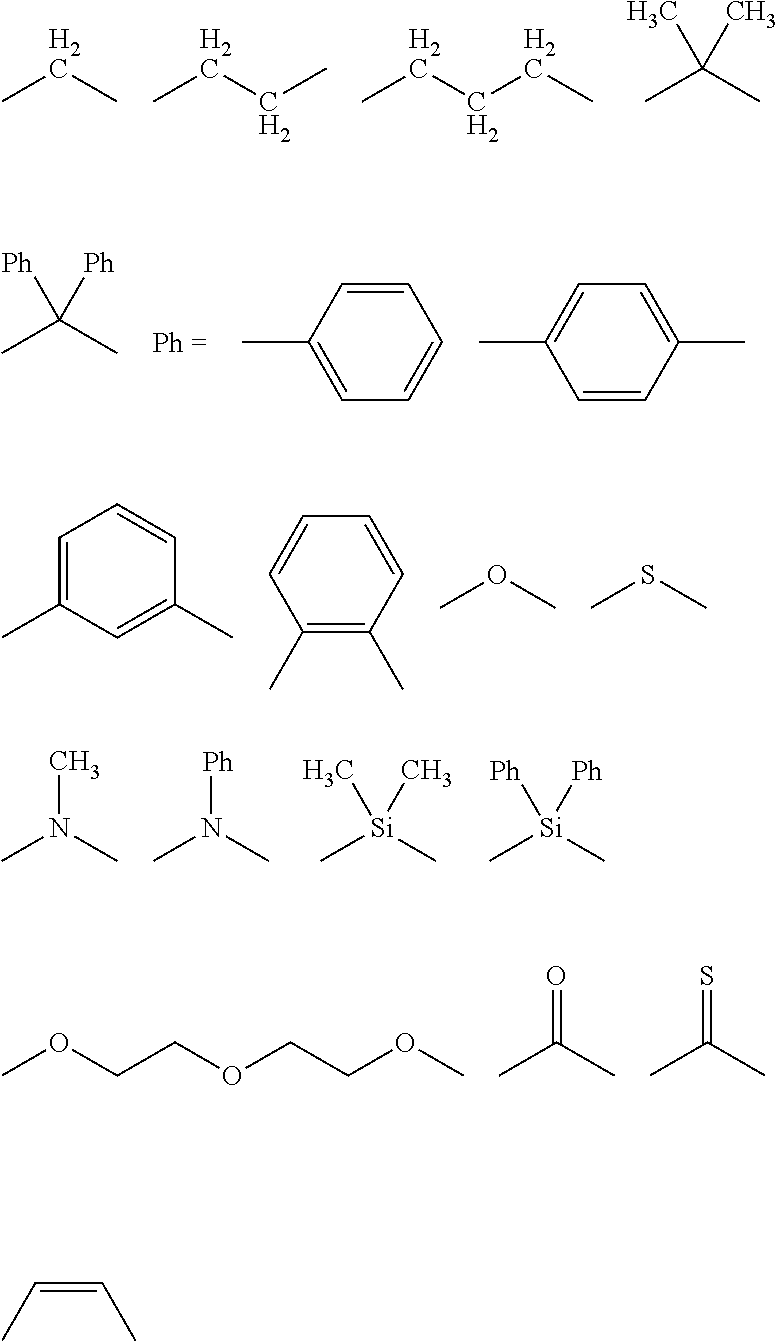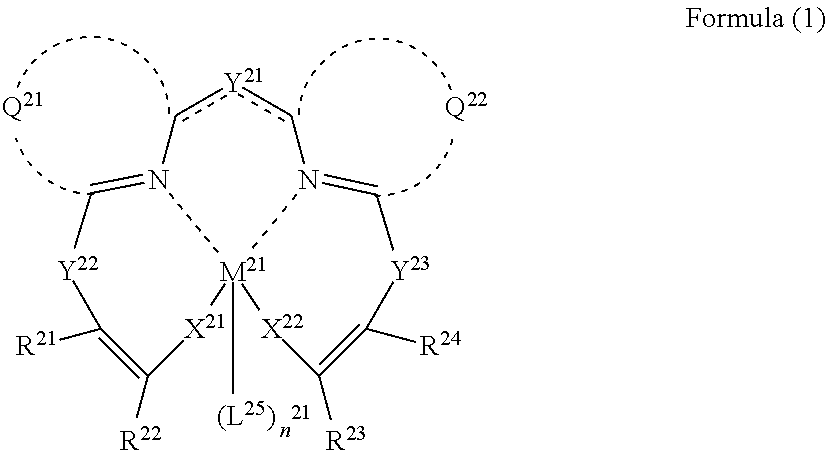Organic Electroluminescent Device
a technology of electroluminescent devices and organic materials, applied in the direction of luminescent compositions, organic semiconductor devices, chemistry apparatuses and processes, etc., can solve the problem of lower luminous efficiency of organic electroluminescent devices, and achieve the effect of improving driving durability
- Summary
- Abstract
- Description
- Claims
- Application Information
AI Technical Summary
Benefits of technology
Problems solved by technology
Method used
Image
Examples
examples
[0511]Hereinafter, the organic electroluminescent device according to the invention will be described with reference to Examples, but it should be understood that the invention is not restricted by these Examples.
1. Preparation of Organic Electroluminescent Device
(1) Preparation of an Organic Electroluminescent Device of Comparative Example (Device 1)
[0512]A glass plate having an ITO film of 0.5 mm in thickness and 2.5 cm square (manufactured by Geomatec Co., Ltd., surface resistance: 10 Ω / sq) was placed in a washing container, washed with 2-propanol under ultrasonic irradiation, and treated with UV and ozone for 30 minutes. The following organic compound layers were vapor-deposited one by one on the transparent anode (ITO film) by vacuum deposition.
[0513]The vapor deposition rate in the Examples of the invention is 0.2 nm / sec, unless specified otherwise. The vapor deposition rate was determined by using a quartz resonator. The film thickness described below was also determined by u...
PUM
| Property | Measurement | Unit |
|---|---|---|
| temperature | aaaaa | aaaaa |
| temperature | aaaaa | aaaaa |
| ionization potential | aaaaa | aaaaa |
Abstract
Description
Claims
Application Information
 Login to View More
Login to View More - R&D
- Intellectual Property
- Life Sciences
- Materials
- Tech Scout
- Unparalleled Data Quality
- Higher Quality Content
- 60% Fewer Hallucinations
Browse by: Latest US Patents, China's latest patents, Technical Efficacy Thesaurus, Application Domain, Technology Topic, Popular Technical Reports.
© 2025 PatSnap. All rights reserved.Legal|Privacy policy|Modern Slavery Act Transparency Statement|Sitemap|About US| Contact US: help@patsnap.com



